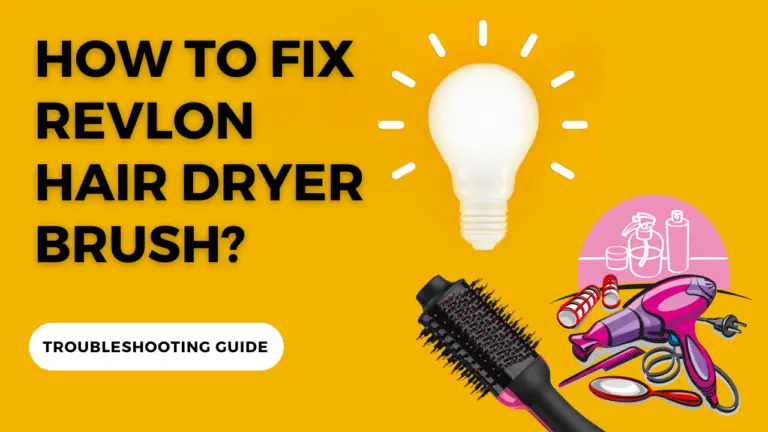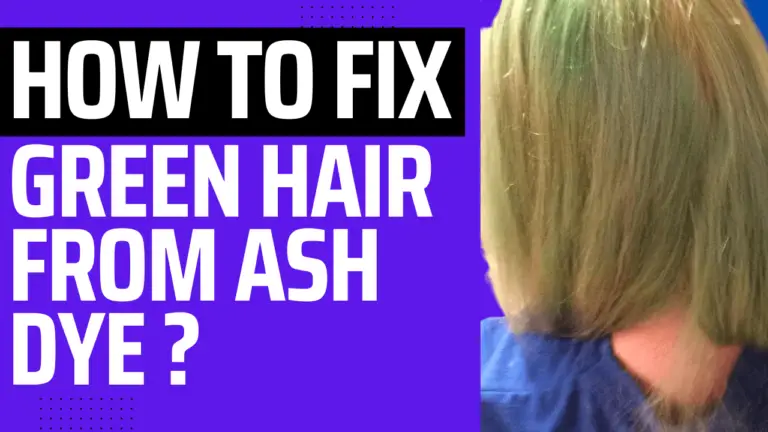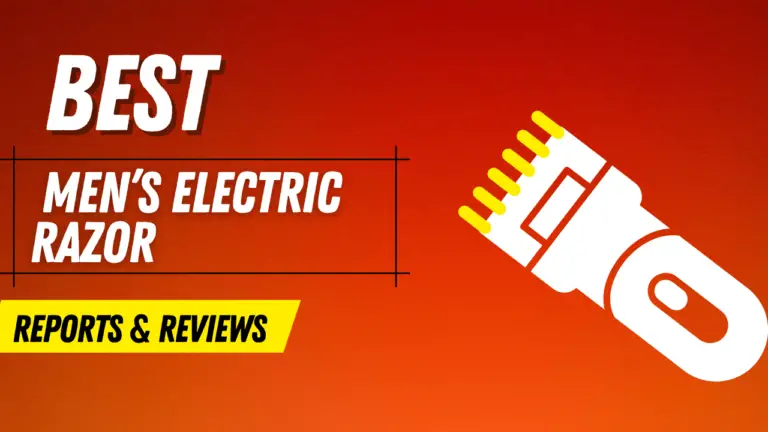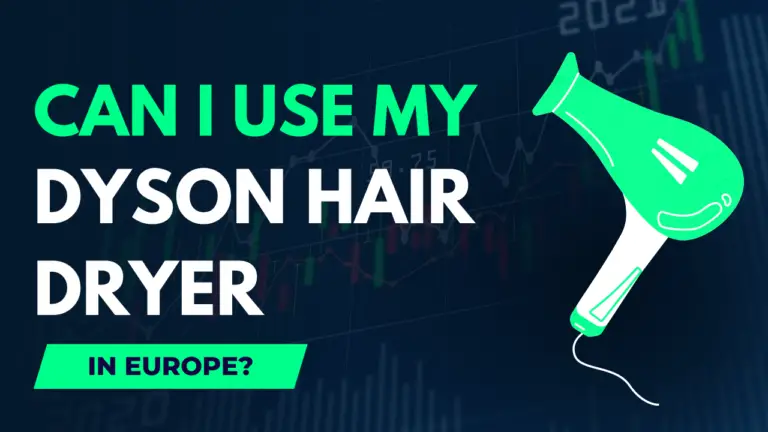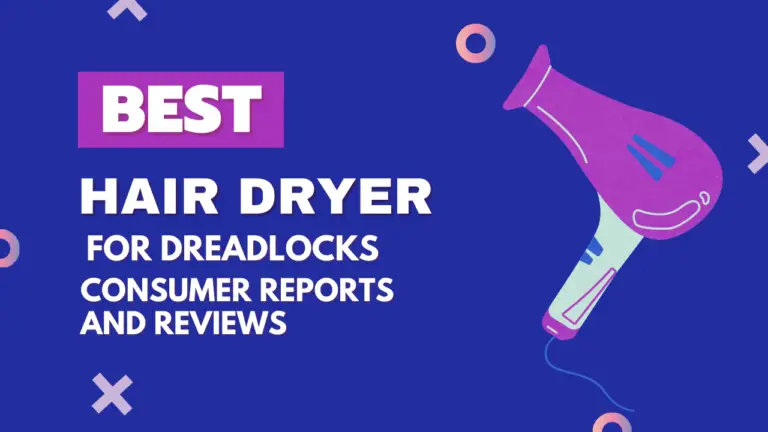How Can You Choose The Best Bleach For Your Hair?
Last Updated on September 18, 2023 by Emily
You need to be very careful when it comes to bleaching your hair. Bleach can damage your hair, so you must make sure that you choose the right product for your hair type. There are a few things that you should keep in mind when selecting bleach for your hair.
You must ensure that the bleach you choose is designed for your hair type. Different types of bleaches are available on the market, so you must choose one that will work well with your hair. If you have excellent hair, then you need to make sure that you select a bleach designed for fine hair. If you have very thick hair, you need to make sure that you choose bleach intended for thick hair.
When choosing bleach for your hair is the level of bleaching you want to achieve. If you only want to lighten your hair a little bit, then you can choose a bleach that has a lower level of bleaching. However, if you’re going to achieve a very light hair color, then you need to make sure that you choose a bleach with a higher level.
You must ensure you follow the instructions on the label carefully. Bleaching your hair can be very.
Contents
What Is Hair Bleach And How It Works?
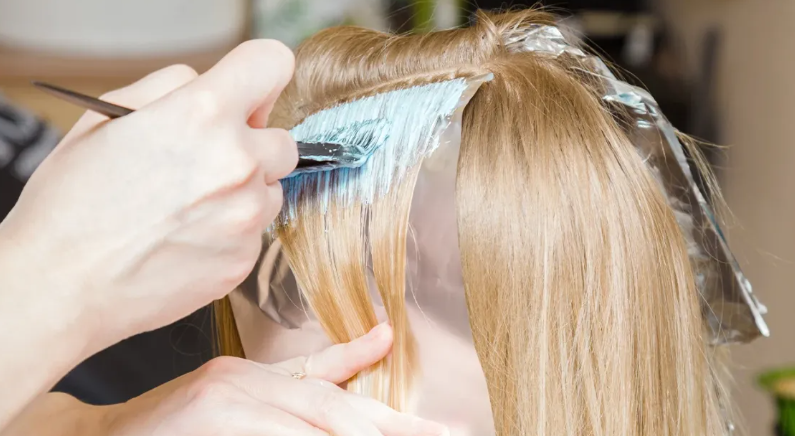
Hair bleach is a chemical product used to lighten or drastically change the color of hair. It works by lifting the pigments in your hair, allowing you to achieve lighter shades of color. Depending on which type of bleach you use, it can be suitable for both natural and dyed hair.
Factors To Consider While Choosing Bleach
Your Natural Hair Color:
When it comes to choosing the best bleach for your hair, one of the most important things to consider is your natural hair color. If you have dark hair, you’ll want a stronger bleach that can lift more pigment and give you a lighter result. If you have light-colored or highlighted hair, then a milder bleaching agent might be enough for you.
Different Types Of Bleach:
Be sure to research different types of bleach before deciding which one is right for you. Each type has its own benefits and drawbacks, so it’s important to know what you’re getting into before diving in.
1. Powder Bleach: Powder bleach is the most common type of hair bleach and typically consists of two parts; a bleaching powder and a developer. The amount of developers used will determine how light your hair will be.
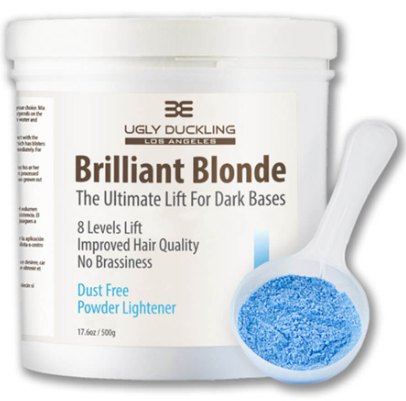
Pros:
- Easily accessible.
- Highly customizable to your desired shade.
- Good for experienced users who understand how to mix and use the product correctly.
Cons:
- Can be very damaging if not used properly
- Difficult to measure the exact amounts of powder and developer
2. Cream Bleach: Cream bleach is typically stronger than powder bleach and can be used to achieve lighter shades on darker hair more quickly. It also has a gentler formula, making it more suitable for fragile or damaged hair.
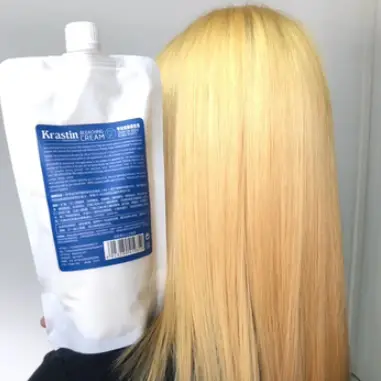
Pros:
- Easy to use.
- Stronger than powder bleach, which makes it better for darker hair types.
- Less messy and easier to control than powdered bleach.
Cons:
- Easier to overuse, which can cause a lot of damage
- Not as customizable as powder bleach
3. Oil-Based Bleach: This type of bleach is great for creating highlights without affecting the rest of your hair and tends to be less damaging than other types of bleach. It works by using oil to help protect the scalp and hair shaft while lightening the hair.
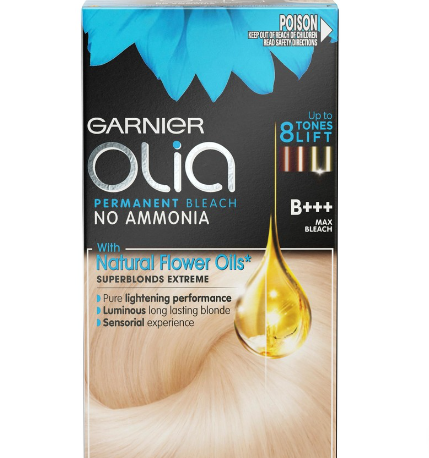
Pros:
- Oil base helps nourish and protect your hair while bleaching
- Great for very dark or thick hair
Cons:
- Can be more difficult to use than powder or cream bleach
- Harder to find and more expensive than other types of bleach
4. Liquid Lightener: Liquid lightener is a strong type of bleach and should be used with caution. It’s typically mixed with a developer to create a paste-like consistency and works quickly to lift the hair cuticles and achieve dramatic results. However, this type of bleach can cause significant damage if not used properly.
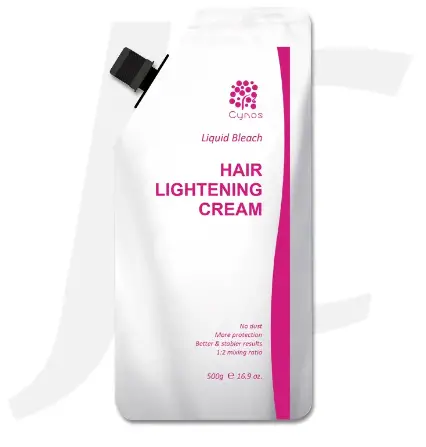
Pros:
- Ideal for creating highlights without affecting the rest of your hair
- Non-damaging formula
Cons:
- More difficult to use than other types of bleach
- Can be hard to find and more expensive than other types of bleach
According To The Thickness Or Thinnes Of Your Hair:
If you have thick hair, it is best to opt for a stronger bleach with a higher volume. This will ensure that the product works its way through your entire head of hair and reaches the roots without having to leave it on for too long.
For thin or fine hair, look for lighter formulas with lower volumes so as not to cause any damage or over-processing. It’s also important to read the ingredients list and pick a product that is specially formulated for your hair type and color.
Bleach’S Strength, Tone, And Developer Level:
When choosing a strength of bleach, consider what shade you want to achieve. Generally speaking, lighter shades require stronger bleaches, while darker shades can use weaker versions. Additionally, if you have naturally dark or colored hair, you may need to use a higher volume developer than is recommended on the box.
When it comes to bleaching tones, there are several options available. You can go for a warm toner, which will lighten the yellow tones in your hair and give you an overall lighter shade. Alternatively, a cool toner will lighten the orange undertones in your hair and provide you with a more ashy color.
Bleaching developer levels vary from 10 to 40 volumes. A higher volume of developer means that it’s stronger and more likely to lift the excess pigment from your hair. It is recommended to use 30-volume developers if you are looking to achieve a platinum blonde look or 40-volume developers if you want an even lighter hue.
Bleach Volume:
It’s also important to consider the volume of bleach being used. For those with thick and/or coarse hair, a higher volume of bleach is usually required in order to achieve the desired lightening effect. Those with fine or damaged hair should choose a lower volume in order to reduce the potential for damage.
The Ingredients:
Avoid anything with added moisturizers, as these can prevent the bleach from working properly. Look for products with natural oils or proteins that can help protect your hair and scalp, as well as products with added vitamins that can help nourish your hair. .
Consider Bleach Timing:
When it comes to bleaching your hair, timing is everything. If you’re new to the process, start off with a mild bleach and leave it on for about 15-20 minutes; if you’ve already bleached your hair before, use a stronger formula and increase the processing time. It’s important to pay attention to the instructions provided on the bleach packaging and adjust your process accordingly. Additionally, take into consideration how light you want your hair to be – the longer you keep it on for, the lighter it will become. Keep in mind that if you decide to go much lighter than your natural shade, you may have to use multiple rounds of bleaching and toning to achieve the desired results.
What’s Your Hair Colour Goal?
- You want lighter hair: If you would like to lighten your hair color, powder bleach is a great option, as it offers intense results in the shortest amount of time.
- You want darker hair: If your goal is to darken your hair, oil-based bleach is an ideal choice, as it provides more control over the process and can achieve a range of subtle colors.
- You want to enhance your natural hair color: if your goal is to enhance your natural hair color, cream bleaches and liquid lighteners are the best options as they provide more subtle highlights.
- You want to cover grey hair: if your goal is to enhance or cover your natural hair color, you will likely want to opt for a cream bleach as it can be applied more evenly and provides more control over the lightening process.
- You want highlights only: if you are looking to add some depth or highlight certain areas without going too dramatic, a liquid lightener may be the best option.
Choose Your Style:
- If you’re starting with blonde hair, choose a bleach that is one to two shades lighter than your natural color.
- For black and dark brown hair, choose a bleach that is three to four shades lighter.
- If you have red hair, select a bleach that is one to two shades lighter.
- For gray or white hair, pick a bleach that is two to three shades lighter.
It is important to note that bleaching will not bring color-treat hair back to its original shade, so make sure to choose a bleach that matches your current hair color.
Read The Instructions:
Make sure you read the instructions on the bleach package carefully. Many bleaches require you to mix them with a developer, so it’s important to understand exactly how to do this before beginning.
Perform A Strand Test:
Before applying the bleach to your entire head, perform a strand test first. This will help you determine the time it takes for your hair to achieve your desired shade and avoid any unpleasant surprises.
Consult With A Professional:
If you’re unsure about what type of bleach to use or how to apply it properly, consult with a professional stylist. They can help you find the right product and provide the guidance you need for safe and effective results.
Your Hair Type And Level Of Damage:
Different types of bleach work better on certain hair types.
How To Choose Bleach For Damaged Hair Type?
If you have damaged or dry hair, it’s best to choose a more gentle bleach like cream, oil-based, or liquid lightener. These types are less harsh on the hair and won’t cause as much damage. It’s also important to follow the instructions carefully when using these bleaches and be sure not to leave them on for too long.
How To Choose Bleach For Normal Hair Type?
If you have normal, healthy hair, then any type of bleach should work fine. For general use, a powder bleach is the best choice as it’s easy to use and can be adjusted for different shades and depths. When using this type of bleach, it’s important to mix it with the developer according to the instructions on the package. Once mixed, it should be applied to the hair immediately and rinsed off after the recommended time.
Quality Bleach Product:
Look for a brand of bleaching powder with good reviews from people who have used it in the past. Make sure to read the directions and ingredients on each product carefully before buying.
Tips For Choosing The Right Bleach:
- Consider the amount of lightening you want to achieve: If you want to lift your hair color several shades, a high-volume developer is recommended.
- Take into account how often you plan on using bleach: If you want to bleach your hair frequently, go for a milder option.
- Opt for ammonia-free formulas if possible: These will be less harsh on your hair and scalp.
- Choose the right shade of blonde for you: Different shades of blonde suit different skin tones, so make sure you pick the right color for you.
- Those with dark hair should consider a pre-lightener: This product can help remove stubborn pigment and make the bleaching process easier.
- Choose a gentler type of bleach if your hair is damaged or dry: Cream, oil-based, or liquid lightener are good choices if you have fragile hair.
- Boost the strength of your bleach: You can add egg whites or oil to strengthen it and reduce damage to your hair.
How To Bleach Your Hair At Home?
- Gather your supplies: Make sure you have all the items you need before beginning. You’ll need a pair of gloves, a hair lightener, an oxidizing developer, a tint brush or bowl and applicator brush, clips to section off your hair, aluminum foil or plastic cap (if you plan on bleaching larger sections), and shampoo and conditioner to help protect your hair.
- Prepare Your Hair & Mix the Color: Before starting any bleaching process it’s best to wash your hair with a clarifying shampoo to remove any product buildup. This will also ensure that the color is applied evenly throughout all of your strands. Once you’ve finished washing and drying your hair, prepare the mix using the instructions provided with the lightener. For best results, use an oxidizing developer that is one level higher than your desired lighting.
- Section & Apply the Bleach: Start at the back of your head and use clips to section off all of your hair into four equal parts – two on each side. This allows you to reach every strand without complications or overlap. Now start applying the bleach, beginning at any small sections you’d like to highlight first, then move on to larger chunks if desired. When using smaller sections, apply with a tint brush or bowl and applicator brush combo, while larger areas should be treated with aluminum foil or plastic cap provided in most kits.
- Process the Hair: Allow the hair to process according to the instructions provided with your lightener. Generally, this should take between 30-60 minutes.
- Rinse & Tone: Once the desired level of lightening has been achieved, rinse out the bleach and shampoo with a hair mask or conditioner specifically designed for color-treated hair. This will help keep your hair healthy and hydrated while you adjust to your new look. To tone down any brassy colors left behind after processing, finish off with a toner of choice.
- Style & Enjoy: Now that you’ve completed the process and finished styling your new look, it’s time to enjoy!
By following these steps, you should be able to achieve the perfect hair-lightening results every time. With proper care and maintenance, you can enjoy your new look for years to come! So go ahead and give it a try – happy bleaching!
Faqs
What Consistency Should Bleach Be When Bleaching Hair?
When bleaching hair, it’s important to use a bleach consistency that is thin enough to spread over the desired area but thick enough to remain in place. For best results, mix the bleach powder with a developer to achieve a creamy texture. You should be able to run your finger through the mixture without it dripping off. If it’s too thick, add more developer; if it’s too thin, add more bleach powder.
How Often Can I Use Bleach On My Hair?
Bleaching your hair can be damaging and can lead to dryness and breakage if done too often. We recommend only bleaching your hair every one to two months in order to allow time for your hair to rest and recover in between sessions. If you choose to bleach more frequently, consider investing in deep conditioning treatments or protein masks that will help repair any damage.
How Should I Prepare My Hair Before Bleaching?
Before applying any type of bleach to your hair, there are a few steps you should take to ensure the best results. Begin by washing and conditioning your hair with a moisturizing shampoo and conditioner. Once done, apply a nourishing pre-treatment oil or lotion to protect your scalp from irritation and help make the bleaching process smoother. Finally, detangle your hair using a wide-toothed comb before you start bleaching.
What Are Some Tips For Successful Hair Bleaching?
When it comes to successfully bleaching your hair, there are several tips that will help you achieve better results. For starters, always remember to perform an allergy test 48 hours prior to applying bleach so you can be sure of any potential reactions. read the instructions carefully.
What All Do I Need To Bleach My Hair?
To bleach your hair, you will need the following items: hair bleaching powder, a developer with a 20 or 30-volume strength, plastic gloves, and a tinting brush. You may also want to use an old towel and some petroleum jelly to protect your skin from any potential damage. make sure you have proper ventilation in the area where you are bleaching.
What Should I Do If My Hair Feels Dry After Bleaching?
If your hair feels dry after bleaching it, don’t panic! Dryness is often caused by over-bleaching or incorrect timing of each step of the process. To remedy this issue, begin by deep conditioning your locks at least once a week using an intensive mask or leave-in conditioner. we recommend avoiding heat styling tools and switching to a shampoo and conditioner specifically designed for bleached hair. Lastly, invest in regular protein treatments to rebuild strength and elasticity.
Should I Cut My Hair Before Or After Bleaching?
It’s recommended that you wait to trim your locks until after the bleaching process is complete since bleach can cause damage or breakage along the length of your hair. After bleaching, use a wide-toothed comb and gently separate any tangles before snipping away split ends – this will help keep your look healthy and fresh! If you choose to go shorter, be sure to book an appointment with a professional stylist
Conclusion:
Choosing the right bleach for your hair is important if you want to achieve the desired results without causing damage. Generally speaking, powder bleach is suitable for normal hair, while cream, oil-based, or liquid lighteners are better for those with damaged or dry hair. Be sure to perform a strand test to determine the time it takes for your hair to reach the desired shade, and always use a deep conditioning treatment afterward. With the right bleach, you can safely get that bright and beautiful look you want.
